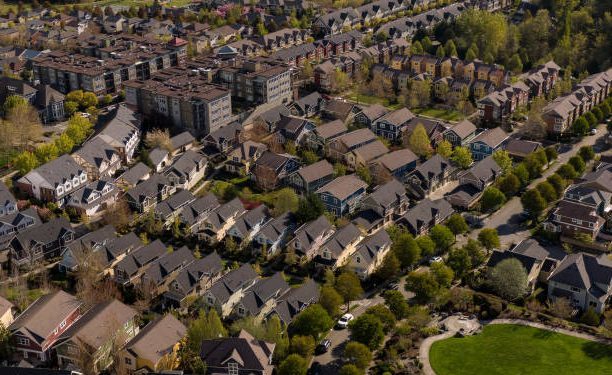Recent data from Redfin shows that fewer low-income Americans got mortgage loans last year compared to 2020. The U.S. Federal Reserve raised interest rates a lot, making it harder for people to buy homes.
The usual 30-year mortgage rates went up over 7%. People who already own homes are sticking to their low rates from the pandemic time, which makes fewer homes available for sale and pushes prices up.
Because of this, the percentage of new mortgages going to low-income Americans dropped from 23.2% in 2020 to 20.6% last year, going back to how things were in 2018.
Is This Like the 1970s Housing Market?
The current housing market reminds some people of the 1970s. Back then, there was high inflation and a big drop in stock prices. But today’s market is different because jobs are growing and the economy is strong.

The big problem now is that there aren’t enough homes for sale. This was a problem even before the pandemic, but the pandemic made it worse.
Even though more new homes are being built, there still aren’t enough, mainly because people don’t want to give up their low interest rates and because there haven’t been enough smaller, cheaper homes built over the years.
The Struggle for Low-Income Homebuyers
It’s harder than ever for low-income Americans to buy homes. The progress they made during the pandemic is gone. Homes cost a lot more now, and mortgage rates are higher, so it’s tough for low-income people to buy them.
Also, home prices have gone up much faster than wages, so it’s even harder for people with low incomes to afford homes.

It’s kind of ironic because the strong economy should help everyone, but it’s making it harder for less wealthy people to own homes, which makes the gap between rich and poor even bigger.
Looking Closer at Different Areas
The impact of these changes isn’t the same everywhere. Low-income people have better chances of buying homes in places like the Midwest and some parts of the East Coast, where homes are more affordable.
Cities like Minneapolis and Detroit have more low-income people getting mortgages, but in places like Anaheim and Los Angeles in California, fewer low-income people are getting them.
This shows that where you live in the U.S. makes a big difference in whether you can buy a home or not.